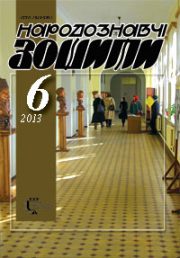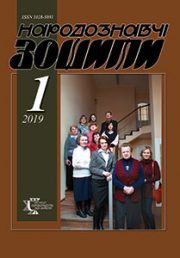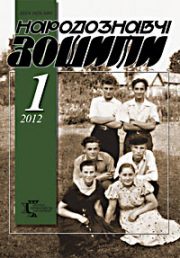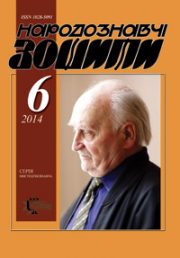The Ethnology Notebooks. 2024. № 2 (182), 327—332
UDK 378.4:658.8:7.05
DOI https://doi.org/10.15407/nz2025.02.327
BRANDING OF HIGHER EDUCATION INSTITUTIONS AS A TOOL FOR IMAGE FORMATION
SOSNYTSKYI Yurii
- ORCID ID: https://orcid.org/0000-0003-2463-6903
- Phd of design, Senior Lecturer
- (Faculty of Architecture, Design and Fine Arts),
- O.M. Beketov National University of Urban Economy in Kharkiv,
- 17, Chornoglazivska Str., 61002, Kharkiv, Ukraine,
- Contacts: e-mail: soyual@ukr.net
MIROSHNYCHENKO Vladyslav
- Student of MNoM 2023-1,
- Department of Fine Arts and Design,
- Kharkiv National University of Urban Economy named after O.M. Beketov,
- 17, Chornoglazivska Str., 61002, Kharkiv, Ukraine
Abstract. This article explores the branding of higher education institutions in Ukraine. It highlights the fundamental aspects of creating a university brand as a critical element of its communication strategy. The study addresses current trends in branding within educational institutions and identifies the key components of a successful university brand: visual identity, mission, values, reputation, and the influence of these elements on the university’s image. Special emphasis is placed on the analysis of visual identity elements, their alignment with modern standards, and their role in building trust among target audiences.
The research examines the branding of higher education institutions as a tool for enhancing their competitiveness in the educational market. It underscores the strategic integration of visual and communicative elements that reflect the institution’s core values and strengthen its position in the eyes of stakeholders, including students, faculty, and the wider community. Furthermore, the article explores the interconnection between branding efforts and the university’s reputation, highlighting their impact on recruitment, partnerships, and long-term development.
The subject of the study is the branding of higher education institutions as a tool for enhancing their competitiveness.
The object of the study is the communication strategy of higher education institutions in the context of their branding.
The study employs a methodology grounded in general scientific principles of systematic analysis, objectivity, and content analysis. This approach enables the identification of effective branding practices that contribute to the sustainable development of higher education institutions.
The branding of higher education institutions plays a crucial role in enhancing their competitiveness and shaping their public image. A well-defined brand, incorporating elements such as visual identity, mission, values, and reputation, significantly impacts how a university is perceived by prospective students, faculty, and other stakeholders. Effective communication strategies and a cohesive brand image contribute to building trust and fostering a strong connection with the target audience. As higher education institutions continue to face growing competition, a strategic approach to branding is essential for ensuring long-term success and recognition in the academic world.
Keywords: branding, visual identity, higher education institutions, communication strategy, university image.
Received 4.03.2025
REFERENCES
- Vasylieva, O.S., Pashkevych, K.L., & Vasylieva, I.V. (2020). Logo and emblem as components of the corporate style of educational institutions in Ukraine. Art and Design, 4, 70—80. Retrieved from: https://doi.org/10.30857/2617-0272.2020.4.5 [in Ukrainian].
- Protsyshyn, Yu.T. (2019). The presence of a brand book as one of the mandatory conditions for creating a strong corporate culture. Molodyi vchenyi, (75, 142—145. Retrieved from: https://molodyivchenyi.ua/index.php/journal/article/view/1341/1310 [in Ukrainian].
- Semeniuk, S. (2013). Branding of a higher educational institution. Halytskyi ekonomichnyi visnyk, 3 (42), 133—138 [in Ukrainian].
- Halchynska, O.S., & Kolosnichenko, M.V. (Ed.). (2022). Design planning of the main components of brand identity. In: M.V. Kolosnichenko. Graphic design in information and visual space (Pp. 149—169). Kyiv: KNUTD [in Ukrainian].
- Studinska, H.Ya. (2016). Brand in the national economy of Ukraine (Monograph). Kyiv: DNDIIME [in Ukrainian].
- Yahliuk, S.V., & Yahliuk, O.O. (2017). On the necessity of creating a brand. Tovaroznavchyi visnyk, 10, 167—173 [in Ukrainian].
- Kucheriak, I. (2013). Theoretical aspects of the formation of an educational brand of a higher educational institution. Obrii, 1 (36), 25—26 [in Ukrainian].
- Mazniev, Ye.O., & Ochkurenko, V.I. (2021). Clothing design as an element of corporate identity. Collection of Scientific Papers: Innovative Technologies for Industry, 1, 252—255 [in Ukrainian].
- Chvala, M.S. (2014). Development of a corporate style for a higher educational institution. Molodyi vchenyi, 1 (03), 180—183. Retrieved from: http://molodyvcheny.in.ua/files/journal/2014/1/41.pdf [in Ukrainian].







